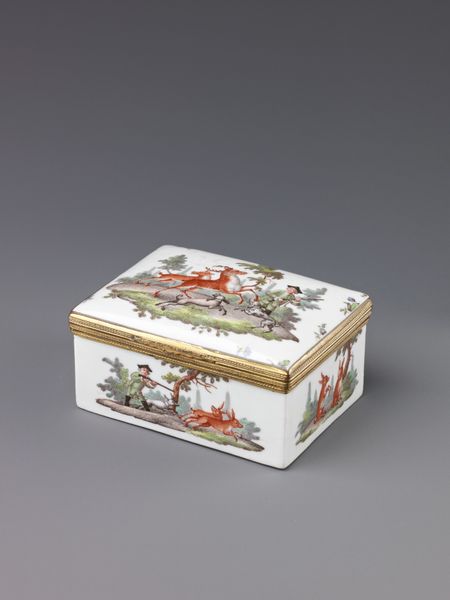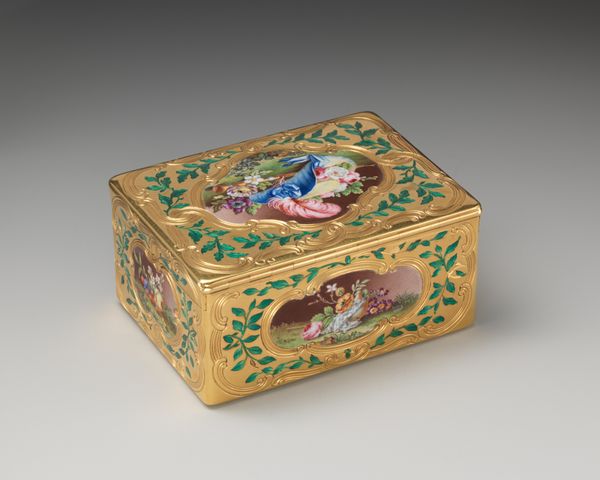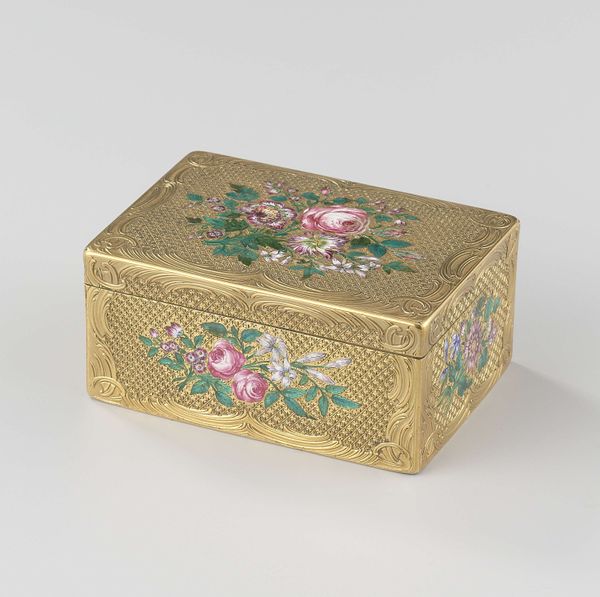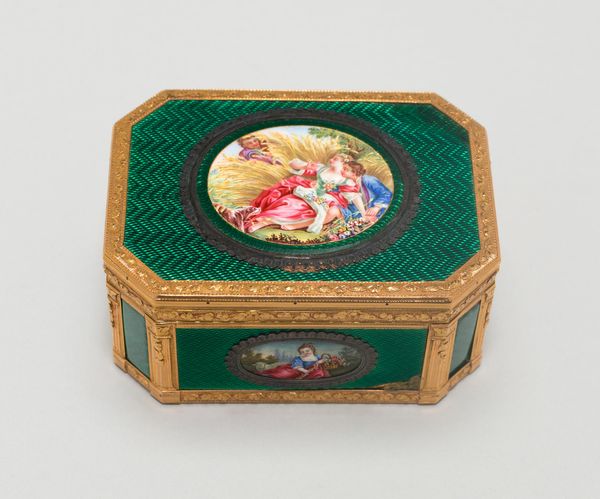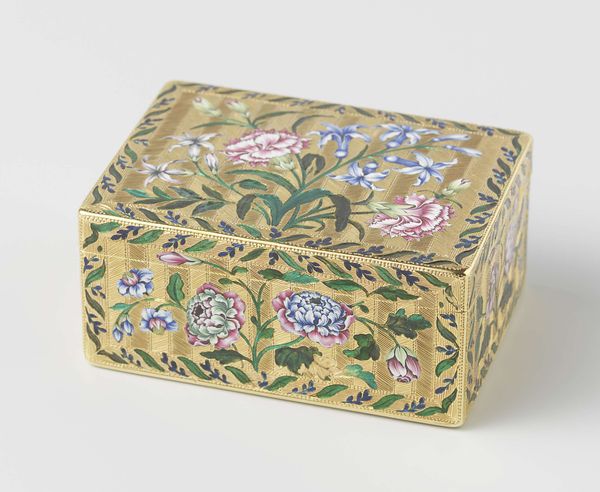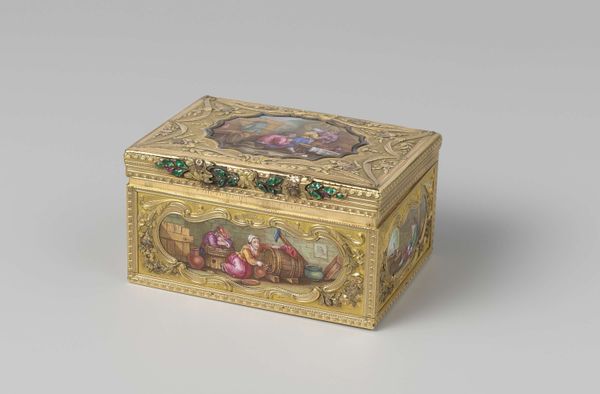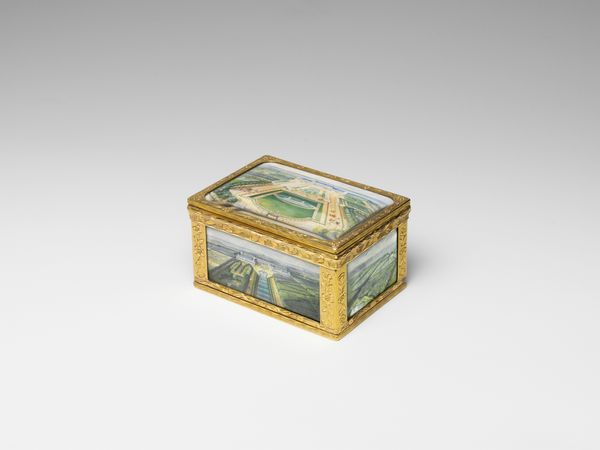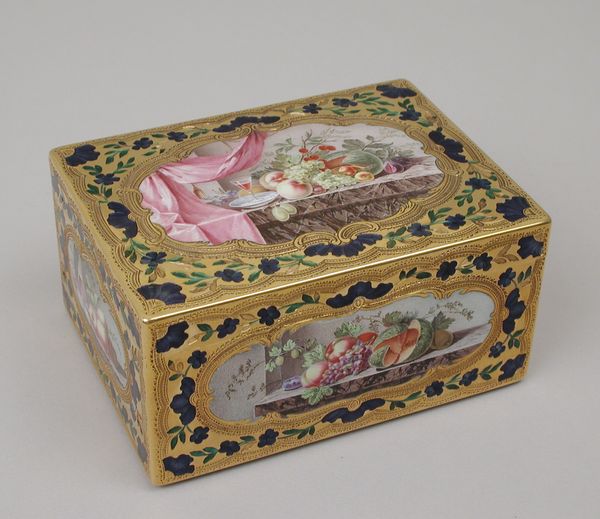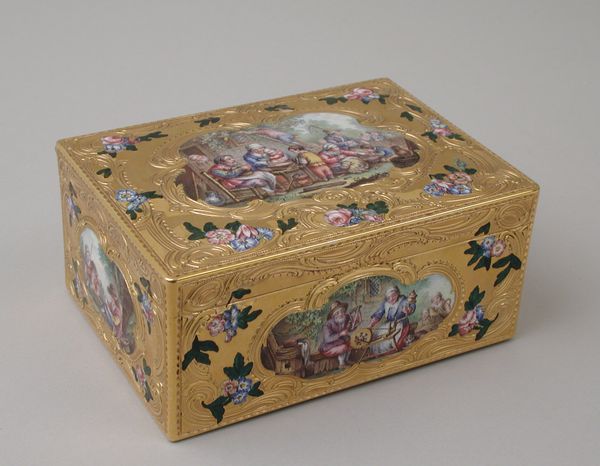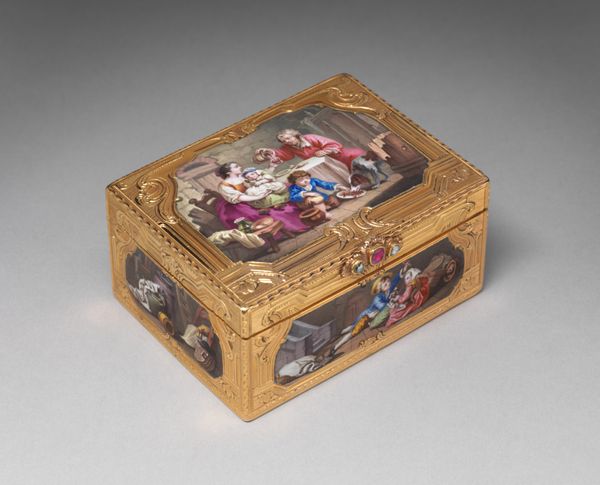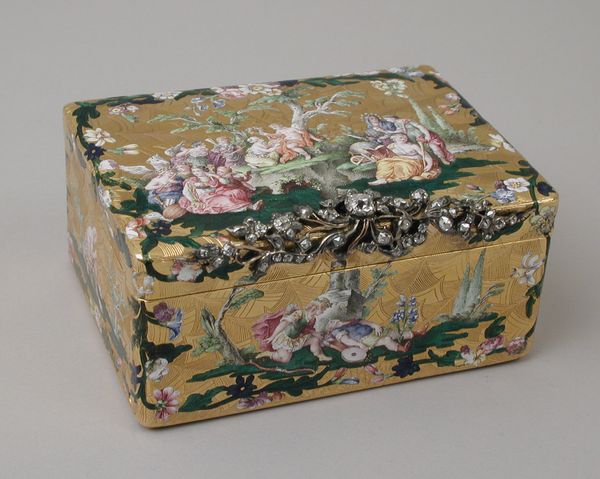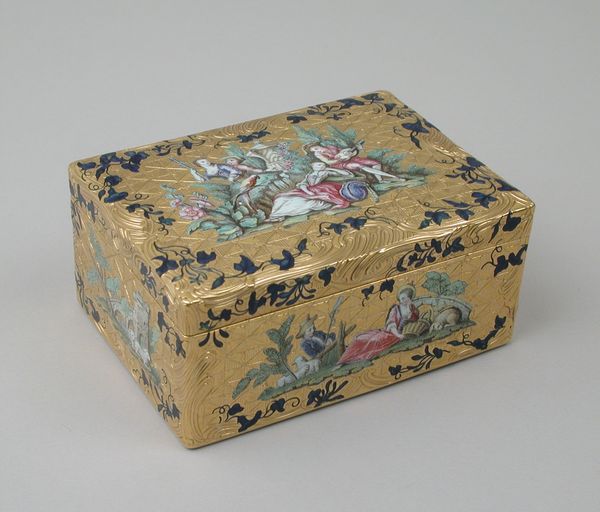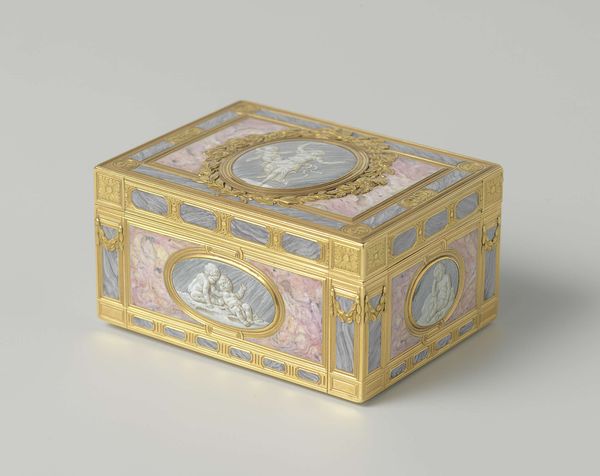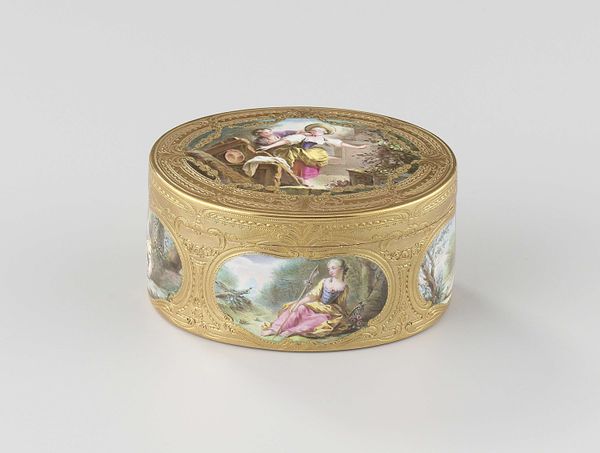
Snuifdoos van goud, rechthoekig met gewelfd deksel. Geheel geëmailleerd en beschilderd met Chinoiserieën c. 1820 - 1840
0:00
0:00
Dimensions: height 4.2 cm, width 7.8 cm, depth 6.2 cm, weight 234 gr
Copyright: Rijks Museum: Open Domain
Curator: This gilded snuffbox, dated circa 1820-1840, offers an intriguing glimpse into the decorative arts of its time. It's crafted from gold and entirely enameled with detailed chinoiseries. What are your first impressions? Editor: It’s vibrant! The colours pop, and the miniature scenes convey such a playful energy. The figures are almost caricatures. It feels whimsical, almost as though a dream from the Age of Enlightenment has been rendered in miniature. Curator: That whimsy connects to a broader trend. During that period, there was this fascination in Europe with the "Orient"–filtered, of course, through a very European lens. This aesthetic appropriation, now referred to as Orientalism, served distinct social and political functions, reinforcing imperial narratives. Editor: Absolutely. These Chinoiseries weren't just decorative, they became loaded cultural commodities. We have to consider the colonial context. How did the actual trade relations and power dynamics shape what Europeans thought of as ‘Eastern’? What kind of consumer was envisioned for such a luxury item? Was it meant to evoke ideas of faraway lands, the spice route? Curator: Precisely. The Rococo style, also evident here in the ornate detailing and playful compositions, suggests a clientele seeking refined elegance. And the choice of subject matter—Chinese scenes imagined, or perhaps misinterpreted, through a European eye—speaks volumes about the intended market. A miniature painted box, made from metal and enamel. Editor: Looking closely, I notice the diversity within these imagined scenes. The scenes represent groups working, almost laboring together. Who are the intended subjects, who are the laborers who get elided from view? Are there traces of enslaved peoples whose work allowed elites to buy and use such luxurious objects? It is hard to separate aesthetics from global power relations, when approaching something like this. Curator: It highlights the complicated legacy embedded within seemingly innocent decorative objects. The creation of this seemingly whimsical item required skilled craftspeople, access to materials, and a social structure that supported luxury production. Snuffboxes like these functioned not merely as practical objects but as social currency, underscoring status and wealth. Editor: It is difficult to reconcile the enchanting delicacy of this object with the colonial narrative underpinning it, it’s quite dissonant. Curator: It is! That very dissonance is why examining pieces like this are so powerful. Thank you for offering such illuminating perspectives, this dialogue allows us to think about aesthetics within this cultural setting. Editor: Thanks, it has been an interesting exercise that emphasizes the relationship between wealth and class.
Comments
No comments
Be the first to comment and join the conversation on the ultimate creative platform.
